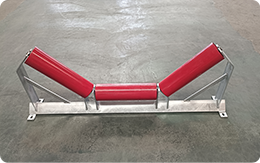 Afrikaans
Afrikaans  Albanian
Albanian  Amharic
Amharic  Arabic
Arabic  Armenian
Armenian  Azerbaijani
Azerbaijani  Basque
Basque  Belarusian
Belarusian  Bengali
Bengali  Bosnian
Bosnian  Bulgarian
Bulgarian  Catalan
Catalan  Cebuano
Cebuano  Corsican
Corsican  Croatian
Croatian  Czech
Czech  Danish
Danish  Dutch
Dutch  English
English  Esperanto
Esperanto  Estonian
Estonian  Finnish
Finnish  French
French  Frisian
Frisian  Galician
Galician  Georgian
Georgian  German
German  Greek
Greek  Gujarati
Gujarati  Haitian Creole
Haitian Creole  hausa
hausa  hawaiian
hawaiian  Hebrew
Hebrew  Hindi
Hindi  Miao
Miao  Hungarian
Hungarian  Icelandic
Icelandic  igbo
igbo  Indonesian
Indonesian  irish
irish  Italian
Italian  Japanese
Japanese  Javanese
Javanese  Kannada
Kannada  kazakh
kazakh  Khmer
Khmer  Rwandese
Rwandese  Korean
Korean  Kurdish
Kurdish  Kyrgyz
Kyrgyz  Lao
Lao  Latin
Latin  Latvian
Latvian  Lithuanian
Lithuanian  Luxembourgish
Luxembourgish  Macedonian
Macedonian  Malgashi
Malgashi  Malay
Malay  Malayalam
Malayalam  Maltese
Maltese  Maori
Maori  Marathi
Marathi  Mongolian
Mongolian  Myanmar
Myanmar  Nepali
Nepali  Norwegian
Norwegian  Norwegian
Norwegian  Occitan
Occitan  Pashto
Pashto  Persian
Persian  Polish
Polish  Portuguese
Portuguese  Punjabi
Punjabi  Romanian
Romanian  Russian
Russian  Samoan
Samoan  Scottish Gaelic
Scottish Gaelic  Serbian
Serbian  Sesotho
Sesotho  Shona
Shona  Sindhi
Sindhi  Sinhala
Sinhala  Slovak
Slovak  Slovenian
Slovenian  Somali
Somali  Spanish
Spanish  Sundanese
Sundanese  Swahili
Swahili  Swedish
Swedish  Tagalog
Tagalog  Tajik
Tajik  Tamil
Tamil  Tatar
Tatar  Telugu
Telugu  Thai
Thai  Turkish
Turkish  Turkmen
Turkmen  Ukrainian
Ukrainian  Urdu
Urdu  Uighur
Uighur  Uzbek
Uzbek  Vietnamese
Vietnamese  Welsh
Welsh  Bantu
Bantu  Yiddish
Yiddish  Yoruba
Yoruba  Zulu
Zulu Understanding Conveyor Idlers and Their Role in Material Handling Systems
Understanding Conveyor Idlers Essential Components of Conveying Systems
Conveyor systems are integral to various industries, facilitating the efficient transportation of materials from one point to another. At the heart of these systems lies a critical component known as the conveyor idler. Understanding the purpose, types, maintenance, and benefits of conveyor idlers is essential for anyone involved in the design, operation, or maintenance of conveyor systems.
What Are Conveyor Idlers?
Conveyor idlers are cylindrical components that support the conveyor belt as it moves along its path. Positioned at regular intervals along the conveyor's length, these idlers play a crucial role in maintaining the belt's alignment, ensuring that it operates smoothly and efficiently. By providing support, reducing friction, and minimizing wear and tear on the belt, idlers contribute significantly to the overall performance of the conveyor system.
Types of Conveyor Idlers
There are several types of conveyor idlers, each designed to suit specific applications and operating conditions. The most common types include
1. Frame Idlers These are used to support the belt and carry the load. They come in various configurations, including troughing idlers that create a concave surface to hold bulk materials securely.
2. Return Idlers Positioned on the return side of the conveyor, these idlers support the belt as it loops back to the loading point, maintaining tension and alignment.
3. Impact Idlers Located at the loading zones, impact idlers are designed to absorb the shock and reduce wear on the belt as materials are loaded onto it.
4. Guide Idlers These help keep the belt aligned and prevent it from drifting off track, particularly in applications with tight curves or elevated sections.
5. Self-aligning Idlers These advanced idlers automatically adjust their position to correct misalignments in the conveyor belt, enhancing operational efficiency.
Importance of Conveyor Idlers
The significance of conveyor idlers cannot be overstated
. They serve multiple crucial functions in a conveyor system- Load Support Idlers bear the weight of the conveyed material, distributing it evenly across the belt and minimizing stress on the system.
conveyor idlers

- Friction Reduction By providing a smooth surface for the belt to glide over, idlers significantly reduce friction, which helps in lowering energy consumption and extending the lifespan of the conveyor components.
- Alignment and Stability Properly configured idlers ensure that the belt remains aligned and stable throughout its operation, preventing issues such as sagging or misalignment that can lead to costly downtime.
Maintenance of Conveyor Idlers
Regular maintenance of conveyor idlers is crucial to their performance and longevity. Symptoms of worn or damaged idlers can include abnormal noise, misalignment, or excessive belt wear. A proactive maintenance routine should include
- Inspection Regularly check idlers for signs of wear, damage, or misalignment. Immediate action should be taken to replace or repair any faulty idlers.
- Cleaning Debris can accumulate on idlers, increasing friction and affecting their performance. Keeping idlers clean helps maintain operational efficiency.
- Lubrication Depending on the design, some idlers may require lubrication to minimize friction and wear.
Benefits of Efficient Idler Systems
Implementing a well-designed and maintained idler system can lead to several benefits
- Increased Efficiency With a well-functioning idler system, the conveyor can operate at optimal speeds without unnecessary interruptions.
- Reduced Operational Costs Lower friction and reduced wear translate to less energy consumption and longer equipment life, thereby reducing overall operational costs.
- Improved Safety A properly maintained conveyor system minimizes the risk of malfunctions and accidents, creating a safer workplace.
In conclusion, conveyor idlers are fundamental components that significantly impact the performance of conveyor systems. Understanding their types, functions, and maintenance can lead to improved efficiency, reduced costs, and enhanced safety in material handling operations across various industries. Investing in quality idlers and implementing a robust maintenance program is key to maximizing the effectiveness of any conveyor system.
-
Revolutionizing Conveyor Reliability with Advanced Rubber Lagging PulleysNewsJul.22,2025
-
Powering Precision and Durability with Expert Manufacturers of Conveyor ComponentsNewsJul.22,2025
-
Optimizing Conveyor Systems with Advanced Conveyor AccessoriesNewsJul.22,2025
-
Maximize Conveyor Efficiency with Quality Conveyor Idler PulleysNewsJul.22,2025
-
Future-Proof Your Conveyor System with High-Performance Polyurethane RollerNewsJul.22,2025
-
Driving Efficiency Forward with Quality Idlers and RollersNewsJul.22,2025





























